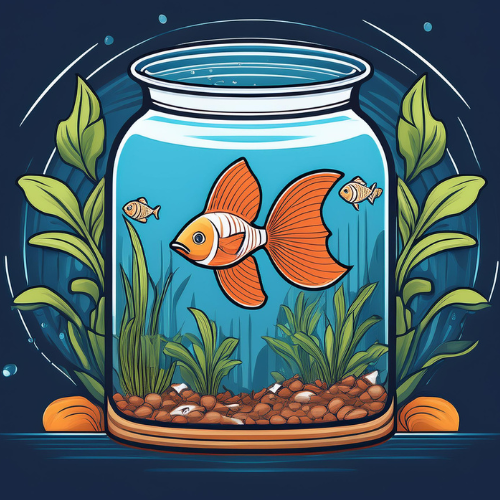Fish Species
Maintaining Water Quality with Pea Gravel in Fish Tank
Aquarium pea gravel in Fish Tank is a popular substrate choice among aquarium enthusiasts because of its many benefits. This type of gravel, characterized by small, round stones, offers both aesthetics and practical benefits. Its smooth texture is gentle on fish, reducing the risk of injury and creating a comfortable environment.
Furthermore, pea gravel’s effectiveness in filtering water and ease of maintenance make it a practical choice for many different types of aquariums.
Join Fishtankfables to learn about the benefits and how to properly use pea gravel so you can improve the health and appearance of your aquarium, ensuring a thriving habitat for your fish and plants.
Advantages of Using pea gravel in fish tank
Aesthetic Appeal:
- Natural and Soft Appearance: Pea gravel provides a natural and smooth substrate, creating a visually pleasing environment that resembles natural aquatic habitats.
- Versatile Style Compatibility: It complements a variety of aquarium styles, from traditional setups to modern designs, enhancing the overall aesthetic of the tank.
Ease of Maintenance:
- Effective Filtration: The small gaps between the pebbles allow for efficient water filtration, as the gravel helps trap and filter out debris and particles.
- Easy to Clean: Pea gravel makes it simple to siphon out leftover food and waste, maintaining a clean and healthy aquarium environment.
Safety for Fish:
- Smooth, Rounded Edges: The rounded, smooth edges of pea gravel are gentle on fish, reducing the risk of injuries compared to sharper substrates.
Affordable Cost:
- Reasonably Priced: Pea gravel is widely available and cost-effective, making it a budget-friendly choice for aquarium enthusiasts.
Disadvantages of Using Pea Gravel:
- Movement During Maintenance: Pea gravel can be easily disturbed or displaced during activities such as vacuuming or water changes, which may require readjustment.
- Fewer Hiding Places for Microorganisms: Unlike porous substrates, pea gravel offers less surface area for beneficial microorganisms to colonize, potentially reducing biological filtration efficiency.

Common Types of Pea gravel in fish tank
Glass Gravel:
- Variety of Colors: Glass gravel comes in a wide range of colors and is often transparent, adding a vibrant and eye-catching element to the aquarium.
- Easy to Clean: Its smooth surface makes it easy to clean, reducing the buildup of algae and debris.
- Higher Cost: Due to the manufacturing process and material, glass gravel is generally more expensive than other types.
Natural Gravel:
- Natural Stone Options: This includes river rocks, pebbles, and other natural stones that provide an authentic and earthy appearance.
- Cost-Effective: Natural gravel is typically less expensive and readily available.
- Pre-Washing Required: It is important to thoroughly rinse natural gravel before use to remove dust, debris, and potential contaminants.
Artificial Gravel:
- Diverse Colors and Shapes: Made from plastic or synthetic materials, artificial gravel comes in a variety of colors and shapes, allowing for creative and customized aquarium designs.
- Customizable: The wide range of options makes it easy to match the gravel to specific aesthetic preferences or tank themes.
- Varied Durability: While generally durable, the longevity and quality can vary depending on the specific materials used.
Effective Use of Pea Gravel
1. Clean Thoroughly:
- Pre-Use Washing: Before adding pea gravel to the aquarium, it is essential to wash it thoroughly. This process removes dust, dirt, and any impurities that might cloud the water or affect the health of aquatic life. Rinse the gravel under running water until the water runs clear.
2. Layering the Substrate:
- Even Layering: Spread a layer of pea gravel approximately 3-5 cm (1-2 inches) thick across the bottom of the tank. This depth provides a stable base for aquatic plants and helps with effective filtration while allowing for easy cleaning and maintenance.
3. Combining with Other Materials:
- Enhanced Aesthetics: Pea gravel can be mixed with other substrate materials such as sand or rocks to create visual interest and thematic accents in the aquarium. Combining different materials can add texture and depth to the substrate, enhancing the overall look of the tank while accommodating the needs of various aquatic species.
Considerations When Using Pea Gravel
1. Avoid Using Too Small Gravel:
- Potential for Ingestion: Very small gravel particles can be ingested by fish, which may lead to digestive issues or blockages. It is important to choose gravel of an appropriate size to prevent such problems.
2. Avoid Sharp-Cornered Gravel:
Gravel with sharp edges or jagged corners can pose a significant risk to fish and other aquatic organisms in your tank. Such gravel can cause physical injuries to fish, potentially leading to wounds or abrasions as they navigate the substrate.
Additionally, sharp-edged gravel can damage delicate fins and scales, making fish more susceptible to infections and other health issues. To ensure the safety and well-being of your tank’s inhabitants, it is crucial to choose gravel that is smooth and rounded.
This type of gravel minimizes the risk of injury and helps create a more secure and comfortable environment for your aquatic life.
3. Regular Maintenance:
- Routine Cleaning: Periodically siphon out detritus and debris from the gravel to maintain good water quality. Regular cleaning helps prevent the buildup of waste and keeps the aquarium environment healthy for its occupants.
Conclusion
In conclusion, pea gravel in fish tank offers several benefits, including its aesthetic appeal, ease of maintenance, and safety for fish. Its smooth, rounded edges and effective filtration properties make it a practical choice for many aquarium setups.
However, it’s important to use pea gravel appropriately by avoiding very small or sharp-edged varieties and ensuring regular cleaning to maintain water quality.
By carefully selecting and maintaining pea gravel, you can enhance both the visual and functional aspects of your aquarium, creating a healthy and attractive environment for your aquatic pets.

